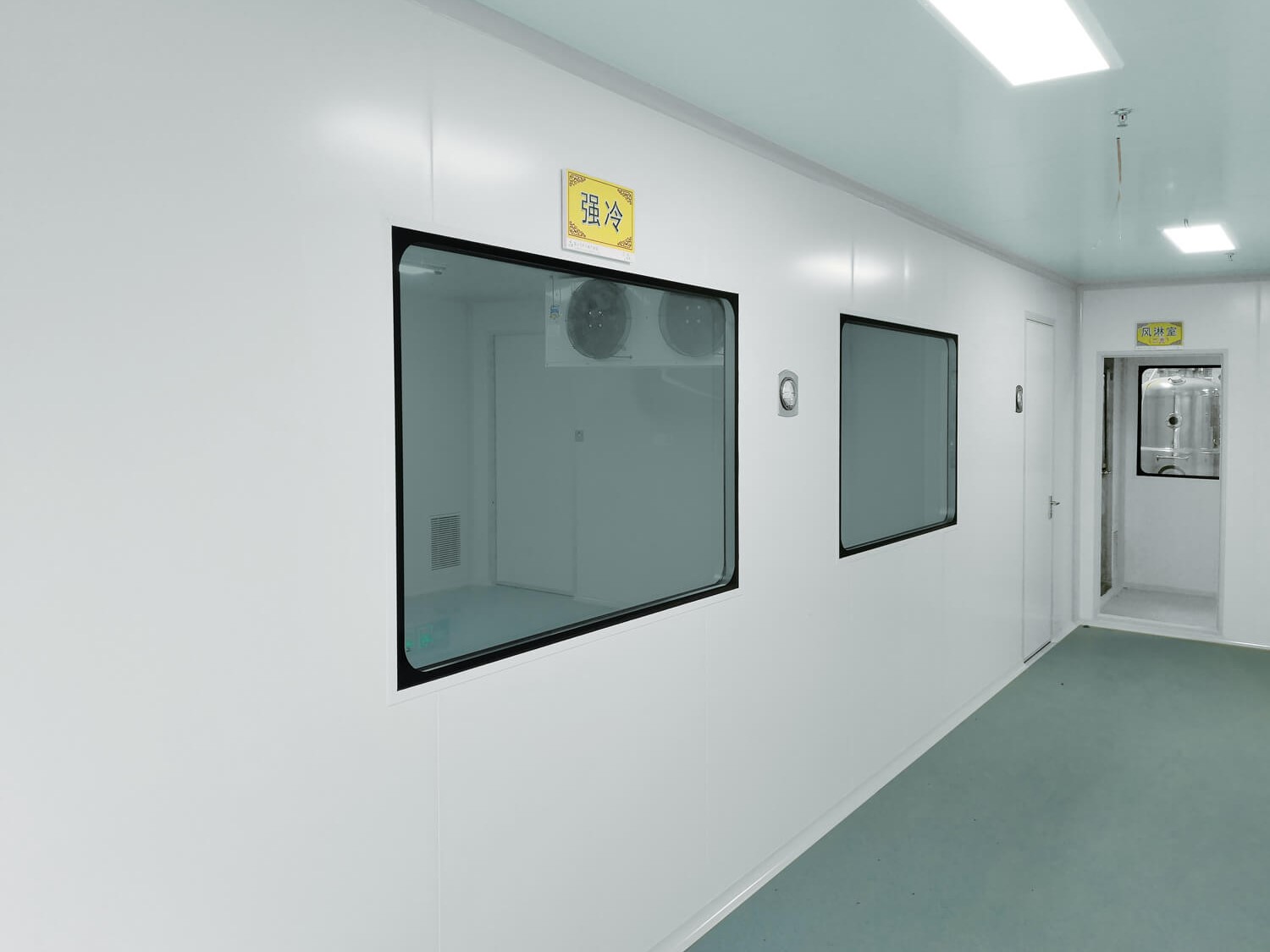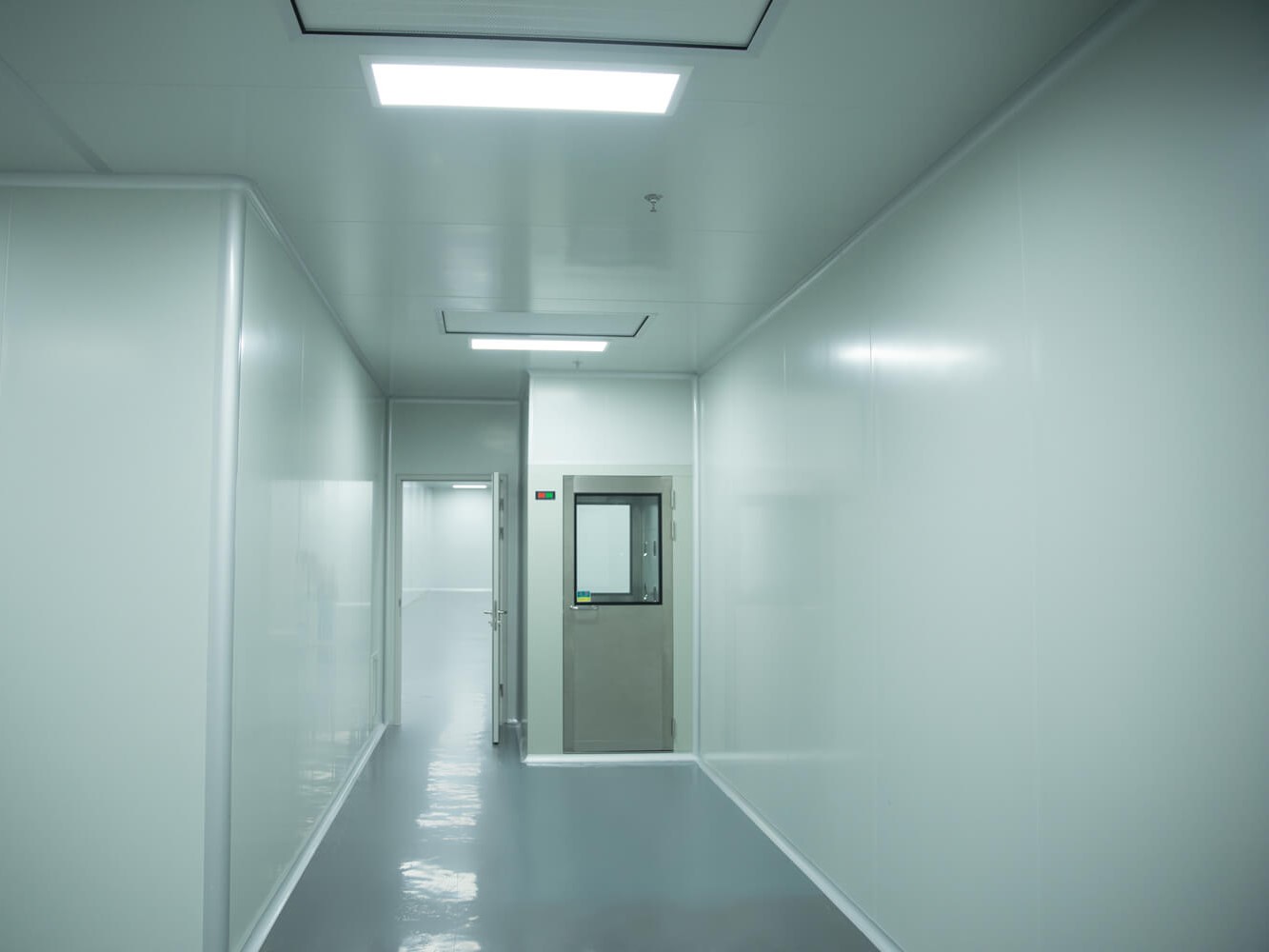

1: Construction preparation
1) On-site condition verification
① Confirm the dismantling, retention and marking of original facilities; discuss how to handle and transport the dismantled objects.
② Confirm the objects that have been changed, dismantled, and retained in the original air ducts and various pipelines, and mark them; determine the direction of the air ducts and various pipelines, and highlight the practicality of system accessories, etc.
③ Confirm the roof and floor locations of the facilities to be renovated and larger facilities to be added, and confirm the relevant carrying capacity, impact on the surrounding environment, etc., such as cooling towers, refrigerators, transformers, hazardous substance treatment equipment, etc.
2) Inspection of original project status
① Check the main planes and spatial dimensions of the existing project, use relevant instruments to make necessary measurements, and compare and verify with the completed data.
② Estimate the workload of facilities and various pipelines that need to be dismantled, including the measures and workload required for transportation and treatment.
③ Confirm the power supply and other conditions during the construction process, and the scope of dismantling the original power system, and mark them.
④Coordinate renovation construction procedures and safety management measures.
3) Preparation for starting work
① Usually the renovation period is short, so equipment and materials should be ordered in advance to ensure smooth construction once construction starts.
②Draw a baseline, including the base lines of clean room wall panels, ceilings, main air ducts and important pipelines.
③ Determine the storage sites for various materials and necessary on-site processing sites.
④ Prepare temporary power supply, water source and gas source for construction.
⑤ Prepare necessary fire-fighting facilities and other safety facilities at construction site, conduct safety education for construction workers, and post safety regulations, etc.
⑥In order to ensure the quality of clean room construction, the construction personnel should be taught cleanroom technical knowledge, safety-related requirements and specific requirements based on the specific conditions of the clean room renovation, and put forward the necessary requirements and regulations for clothing, installation of machinery, cleaning supplies and emergency safety supplies.
2: Construction stage
1) Demolition project
① Try not to use "fire" operations, especially when dismantling flammable, explosive, corrosive, and toxic substance delivery pipelines and exhaust pipelines. If "fire" operations must be used, confirm after 1 hour only when there is no problem can you open the scene highly.
② For demolition work that may produce vibration, noise, etc., coordination with relevant parties should be carried out in advance to determine the construction time.
③ When it is partially dismantled and the remaining parts are not dismantled or still need to be used, the system disconnection and necessary testing work (flow, pressure, etc.) before disassembly should be properly handled: When disconnecting the power supply, an operating electrician must be on-site to handle the relevant matters, safety and operational matters.
2) Air duct construction
① Carry out on-site construction in strict accordance with relevant regulations, and formulate construction and safety regulations based on the actual conditions of the renovation site.
② Properly inspect and preserve the air ducts to be installed at the moving site, keep the inside and outside of the ducts clean, and seal both ends with plastic films.
③ Vibration will occur when installing the carved tent bolts for hoisting, so you should coordinate with the owner and other relevant personnel in advance; remove the sealing film before hoisting the air duct, and wipe the inside before hoisting. Do not worry about the easily damaged parts of the original facilities ( Such as plastic pipes, insulation layers, etc.) are not subject to pressure, and necessary protective measures should be taken.
3) Piping and wiring construction
① The welding work required for piping and wiring should be equipped with fire extinguishing equipment, asbestos boards, etc.
② Carry out strictly in accordance with the relevant construction acceptance specifications for piping and wiring. If hydraulic testing is not allowed near the site, air pressure testing can be used, but corresponding safety measures should be taken according to regulations.
③ When connecting to original pipelines, safety technical measures before and during the connection should be formulated in advance, especially for the connection of flammable and hazardous gas and liquid pipelines; during operation, safety management personnel from relevant parties must be on site and necessary Always prepare fire-fighting equipment.
④ For the construction of pipelines transporting high-purity media, in addition to complying with relevant regulations, special attention should be paid to cleaning, purging and purity testing when connecting to original pipelines.
4) Special gas pipeline construction
① For pipeline systems that transport toxic, flammable, explosive, and corrosive substances, the safe construction is very important. For this reason, the provisions of "Special Gas Pipeline Reconstruction and Expansion Engineering Construction" in the national standard "Special Gas System Engineering Technical Standard" are quoted below. . These regulations should be strictly implemented not only for "special gas" pipelines, but also for all pipeline systems transporting toxic, flammable, and corrosive substances.
②The construction of the special gas pipeline dismantling project shall meet the following requirements. The construction unit must prepare a construction plan before starting work. The content should include key parts, precautions during the operation, monitoring of dangerous operation processes, emergency plans, emergency contact numbers and dedicated persons in charge. Construction personnel should be provided with detailed technical information on potential dangers. Tell the truth.
③ In the event of a fire, leakage of hazardous materials, or other accidents during operations, you must obey the unified command and evacuate in sequence according to the escape route. . When carrying out open flame operations such as welding during construction, a fire permit and a permit for the use of fire protection facilities issued by the construction unit must be obtained.
④ Temporary isolation measures and danger warning signs should be adopted between the production area and the construction area. Construction workers are strictly prohibited from entering areas unrelated to construction. Technical personnel from the owner and the construction party must be present at the construction site. The opening and closing of the mesh door, electrical switching, and gas replacement operations must be completed by dedicated personnel under the guidance of the owner's technical personnel. Operations without permission are strictly prohibited. During cutting and transformation work, the entire pipeline to be cut and the cutting point must be clearly marked in advance. The marked pipeline must be confirmed by the owner and the construction party's technical personnel on site to prevent misoperation.
⑤ Before construction, the special gases in the pipeline should be replaced with high-purity nitrogen, and the pipeline system should be evacuated. The replaced gas must be processed by the exhaust gas treatment device and discharged after meeting the standards. The modified pipeline should be filled with low-pressure nitrogen before cutting, and the operation should be carried out under positive pressure in the pipe.
⑥After the construction is completed and the test is qualified, the air in the pipeline system should be replaced with nitrogen and the pipeline should be evacuated.
3: Construction inspection, acceptance and trial operation
① Completion acceptance of the renovated clean room. First, each part should be inspected and accepted according to relevant standards and specifications. What needs to be emphasized here is the inspection and acceptance of the relevant parts of the original building and system. Some inspections and acceptance alone cannot prove that they can meet the "renovation goals" requirements. They must also be verified through trial operation. Therefore, it is not only necessary to complete the completion acceptance, but also requires the construction unit to work with the owner to conduct a trial run.
② Trial operation of the modified clean room. All relevant systems, facilities and equipment involved in the transformation should be tested one by one according to the relevant standards and specification requirements and in conjunction with the specific conditions of the project. Trial operation guidelines and requirements should be formulated. During the trial operation, special attention should be paid to the inspection of the connection part with the original system. The newly added pipeline system must not pollute the original system. Inspection and testing must be done before connection. Necessary protective measures should be taken during connection. The test after connection The operation must be carefully checked and tested, and the trial operation can only be completed when the requirements are met.
Post time: Sep-12-2023

